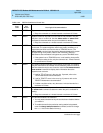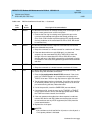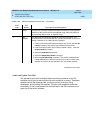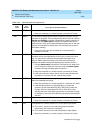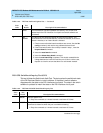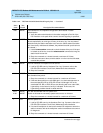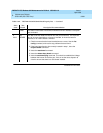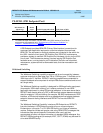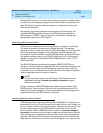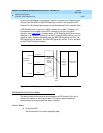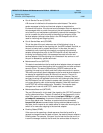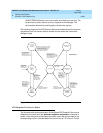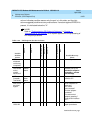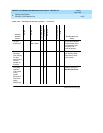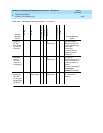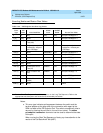
DEFINITY ECS Release 8.2 Maintenance for R8.2csi
555-233-119 Issue 1
April 2000
Maintenance Objects
3-866PE-BCHL (PRI Endpoint Port)
3
Multiple PRI Endpoints on a one line-side facility are separate and distinct within
the facility. Non-overlapping contiguous sets of B-channels are associated with
each PRI Endpoint, and the endpoint equipment is expected to initiate calls
within these boundaries.
The endpoint application equipment must be able to do the following: use
standard ISDN-PRI signaling, adhere to the PRI Endpoint boundaries as
administered on DEFINITY when initiating calls, and handle incoming calls
appropriately based on the PRI Endpoint.
Signaling and B-channel States
These ports use a separate channel for signaling (for example, for call setup).
This mode of operation is known as out-of-band signaling. The separate
signaling channel is called a D-channel in ISDN terminology, and it carries all the
call control signaling messages for the PRI Endpoint Port B-channels. The
D-channel for these B-channels is an ISDN-PRI Signaling Link Port (ISDN-LNK).
The signaling protocol used on the ISDN-PRI Signaling Link Port D-channel is
defined by one of the four selectable ISDN-PRI Specifications: AT&T, CCITT,
ECMA, and ANSI.
The ISDN-PRI Specification defines the possible SERVICE STATES for a
B-channel. The service state is negotiated with the far-end terminal adapter, and
it changes over time. Also, the service state may have a far-end or near-end
component, and it is initialized to the Out-Of-Service/Far-End state. An attempt is
made to negotiate the service state to In-Service.
NOTE:
The service state of a particular PRI Endpoint Port B-channel can be
displayed by issuing the
status pri-endpoint <extension>
system
technician command.
If a call is present, the ISDN-PRI Specification defines the permissible CALL
STATES as well. There are tests in the short and long test sequences for PRI
Endpoint Port that are designed to audit these states and to ensure agreement
between both ends of the PRI wideband connection.
Alarming Based on Service States:
A PRI Endpoint Port B-channel is alarmed with a WARNING if it is placed into a
Maintenance/Far-End or Out-Of-Service/Far-End state. While in such a state, the
port is unusable for calls to the terminal adapter. However, the user can still use
the other remaining ports in the PRI Endpoint to make calls to and from the
terminal adapter. When a WARNING alarm is raised, the
status pri-endpoint
<extension>
command should be used to determine the exact state of the port.
Other alarms can be diagnosed by using the short and/or long test sequences.
Note that a PRI Endpoint Port B-channel can be placed into a Far-End Service
State either by direct action of the far-end terminal adapter or by inaction of the



